
2009 3rd Issue
Feature Articles
(I) Food Safety Day 2009
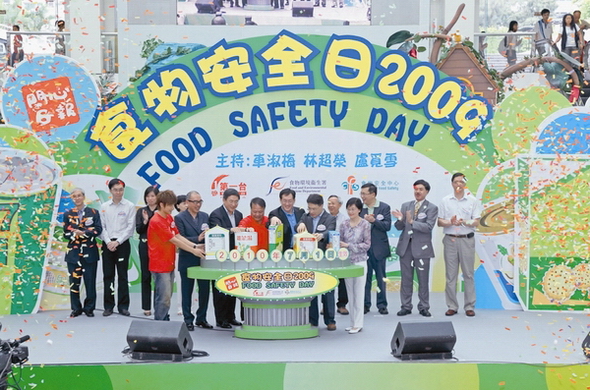
Tripartite collaboration among food trade, consumers and the Government is important in ensuring food safety. As such, the Centre for Food Safety (CFS) organises annually a series of publicity activities to promote food safety. The theme for this year is Nutrition Labelling.
The Nutrition Labelling Scheme for prepackaged food will come into effect on 1 July 2010. The CFS has implemented a three-phase Publicity and Education Campaign on Nutrition Labelling and the first phase was formally launched in March this year. The focus of the work during the first phase is to raise public awareness of nutrition labelling.
Co-organised by the CFS and the Radio Television Hong Kong (RTHK), the "Food Safety Day 2009" adopted nutrition labelling as its theme and "Turn and Look for Healthier Food Choices" as its slogan. The aims were to enhance the awareness and knowledge of nutrition labelling of the general public and to encourage the use of nutrition labels for making healthier food choices. The event took place at Tai Po Mega Mall on 11 July 2009.
The guests officiating at the opening ceremony were Dr York CHOW, the Secretary for Food and Health, Mr Fred LI and Mr WONG Yung-kan, the Chairman and the Vice-chairman of the Legislative Council Panel on Food Safety and Environmental Hygiene, Mr CHEUK Wing-hing, the Director of Food and Environmental Hygiene, Dr Constance CHAN, the Controller of the CFS, Mr Philip CHOW, the Head of the Chinese Programme Service of the RTHK, Prof KWAN Hoi-shan, the Chairman of the Expert Committee on Food Safety, Ms Connie LAU Yin-hing, the Chief Executive of the Consumer Council, Prof Albert LEE, the Director of the Centre for Health Education and Health Promotion of The Chinese University of Hong Kong, Ms Sylvia LAM, the Chairman of the Hong Kong Dietitians Association Limited, Dr Alvin CHAN Yee-shing, the Vice President of the Hong Kong Medical Association, Mr Gordon CHEUNG, the External Coordinator of the Hong Kong Nutrition Association, Mr Philip CHOI Pui-wah, the Executive Member of the Association of Hong Kong Nursing Staff and Mr Christopher YU, the Committee Member of the Home School Information Working Group of the Committee on Home-School Co-operation.
Dr York CHOW, the Secretary for Food and Health, said in his speech that the new nutrition labelling scheme coming into effect on 1 July 2010 would help consumers make healthier and suitable food choices. For the new scheme to bring its benefits into full play, a concerted publicity and promotional programme is indispensable.
The event featured game booths, booths for consultation on nutrition labels and an exhibition. It aimed to enhance the knowledge of nutrition labelling of the general public and to help them make healthier food choices. Participating artists included Mr Alex FONG, Mr Jason CHAN, Mr Louis CHEUNG, Mr Rico KWOK, Miss Ella KOON, Miss KWOK Wing-kiu and RubberBand. They introduced nutrition labelling to the participants in a light-hearted way. Moreover, a little boy called Chris was also invited to share how he managed to lose weight with the help of nutrition labels. Two officiating guests, namely Miss Sylvia LAM and Mr Gordan CHEUNG, explained what a healthy diet was.





The highlight of the event was broadcast in a programme on Radio 1 of the RTHK on 12 July 2009. If you wish to listen to the archived highlight, please visit the RTHK's website at http://www.rthk.org.hk.
(II) Aluminium in Food
Why is Aluminium Present in Food?
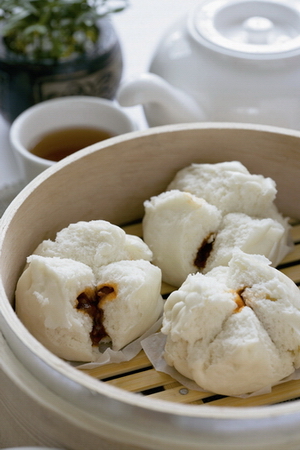 Aluminium is a silvery white metal and is the most abundant metallic element of the earth's crust. It is present in drinking water and food naturally. Aluminium-containing food additives, such as firming agent, raising agent, stabiliser, anticaking agent and colouring matter, have been used in food processing for over a century. These addictives are still permitted to be used in food in many countries.
Aluminium is a silvery white metal and is the most abundant metallic element of the earth's crust. It is present in drinking water and food naturally. Aluminium-containing food additives, such as firming agent, raising agent, stabiliser, anticaking agent and colouring matter, have been used in food processing for over a century. These addictives are still permitted to be used in food in many countries.
Risk Assessment on Aluminium in Food in Hong Kong
The CFS has conducted a study on aluminium in food aiming to examine the levels of aluminium in various food products in which aluminium-containing food additives were added, to estimate the potential dietary exposure to aluminium of the population in Hong Kong and to assess the associated health risk. The CFS collected from the local retail markets a total of 256 food samples, including steamed bread / bun / cake, bakery products, jellyfish, confectionery with coating, snack including fried snack products, other food products including pickles, mung bean vermicelli and cheese products, as well as powder mix, salt and sugar. 10 soya milk powder samples including soya-based formula were also collected for laboratory analysis for aluminium.
The results showed that high aluminium levels were found in steamed bread / bun / cake, some bakery products such as muffin, pancake / waffle, coconut tart and cake, and also jellyfish. This means that aluminium-containing food additives have been widely used in such products. On the other hand, the results showed that aluminium contents in soya-based formula samples were in low level. Therefore, infants fed on soya-based formula are unlikely to experience major toxicological effects of aluminium.
Safety of Aluminium-containing Food
The study also revealed that the average dietary exposure to aluminium for an adult weighing 60 kg was estimated to be 0.60 mg/kg body weight / week, which amounted to 60% of the new Provisional Tolerable Weekly Intake established by the Joint Food and Agriculture Organization / World Health Organization Expert Committee on Food Additives. Yet, the potential health risk of aluminium to a high consumer cannot be ruled out. Those who consume large amount of steamed bread / bun / cake, bakery products such as muffins, pancake / waffle, and jellyfish may be at particular risk.
Advice to the Trade
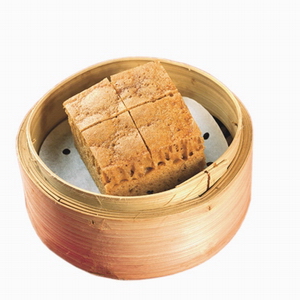
-
Reduce the use of aluminium-containing food additives in preparing food or replace them with other alternatives as far as possible.
-
Develop alternative techniques to reduce the use of aluminium-containing food additives during food processing, e.g. production of salted jellyfish.
-
Ensure that accurate information on label, including specific food additives used, is made available to consumers.
The CFS has prepared "Guidelines on the Use of Aluminium-containing Food Additives" (Guidelines), which set out principles for the use of aluminium-containing food additives in food production and provide recommendations to the trade for reducing aluminium content in food products. The Guidelines are applicable to all manufacturers and producers (including restaurants and bakeries). For details, please visit the following website:
In addition, the CFS has contacted the food trade to find out the progress of reducing aluminium in food. Some traders advised that they have modified the formula of products with aluminium-free food additives. The results were promising. However, some others were not yet successful. Interested traders may contact staff of CFS for further details.
(III) Trans Fats in Food
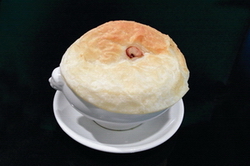
Gigi : I want a set of Meal A. Please change the soup of the day to a puff pastry soup.
Flora : How come you order puff pastry soup? Have you read the study on trans fats newly published by the Centre for Food Safety?
Gigi : I've been very busy recently. How can I have time to read the newspapers? Just tell me about it.
Flora : You're lucky to meet me. Let me tell you. The study of the Centre for Food Safety has found that foods with puff pastry are high in trans fats. Trans fats will raise the bad cholesterol level in our body and increase the risk of coronary heart disease.
Waiter : Have you guys decided yet? There're other customers waiting for me to take orders.
Gigi : Do you have Chinese soup without flavour essence?
What are Trans Fats?
Trans fats in food has lately become a matter of grave public concern. In fact, what are trans fats? Trans fats, also known as "trans fatty acids", are unsaturated fats with at least one double bond in the trans configuration. Trans fats are made when food manufacturers turn oil from liquid form into semi-solid form through hydrogenation so as to increase the shelf life and improve the texture of food.
What Foods Contain Trans Fats?
Hydrogenated vegetable oils (such as shortening and margarines) are usually high in trans fats. Trans fats in our diet mainly come from fried food and bakery products with hydrogenated vegetable oil used as ingredients or in the cooking process. Besides, trans fats are also found naturally in the milk and the fat of sheep and cattle (such as whole milk and butter) at low level. Examples of foods that may be produced with hydrogenated vegetable oil include crackers, chips, cakes, salad dressings, pastries, dried / powdered non-dairy creamers, bread and fried products such as French fries.
What are the Health Impacts of Trans Fats in Food?
Trans fats can raise the level of low-density lipoprotein cholesterol (often called "bad" cholesterol) of our body, while at the same time lower the level of high-density lipoprotein cholesterol (often called "good" cholesterol). This increases the risk of heart disease. To eat healthily, we should select food products with low trans fats content.
Currently, the World Health Organization and Food and Agriculture Organization of Untied Nations suggest that diets should provide a very low intake of trans fats. In practice, this implies an intake of less than 1% of daily energy intake. For example, an individual with a daily energy intake of 2 000 kcal should limit the intake of trans fats to less than 2.2 g per day.
Study on Trans Fats Levels in Local Foods
Sampling from food premises and supermarkets, the CFS analysed the levels of trans fats in 59 food items in six groups, comprising snacks, bakery products, other ready-to-eat foods, dairy/dairy-like products, oils and fats, and beverages.
On a per 100 gram (g) basis, the highest mean trans fats content was found in oils and fats (2.3 g), followed by bakery products (0.48 g), dairy/dairy-like products (0.3 g), other ready-to-eat foods (0.13 g), snacks (0.073 g), and beverages (0.02 g).
The results showed that foods with puff pastry were high in trans fats levels. A bowl of cream soup with puff pastry had 1.6 g of trans fats, about 1.1 g of which came from the puff pastry. The total trans fats reached 73% of the recommended daily intake limit for trans fats while the amount in the puff pastry alone amounted to 50% of that limit.
In general, oils and fats as well as bakery products had high trans fats content. All vegetable oils tested contained trans fats. Besides having high trans fats content, some dairy- or cheese-containing foods also contained high saturated fats content.
Advice to the Trade
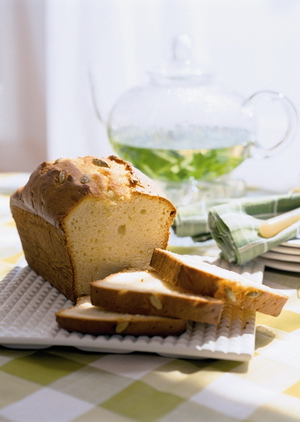
- Modify the manufacturing process to lower trans fats content in foods and oils and fats.
- Declare, for prepackaged foods, the amount of trans fats content on the nutrition label to enable consumers to make informed choices.
- Reduce the total fats content in food:
-
Choose ingredients with lower fat content such as leaner cuts of meat and lower fat dairy products.
-
Reduce the use of deep-frying cooking method.
-
Incorporate fruits, vegetables and whole grain cereals in food products. This will reduce the total fat content of the food products and at the same time increase their fibre content.
-
Ready-made margarine, butter and sauce can be provided on the side of the food products so that consumers can have the choice to take up less fats.
-
- Replace fats and oils that are high in trans fats and saturated fats with those containing monounsaturated (e.g. canola oil and olive oil) and polyunsaturated fats (e.g. soybean oil, corn oil and sunflower oil).
- 5. Refer to the "Trade Guidelines on Reducing Trans Fats in Food"
(http://www.cfs.gov.hk/english/food_leg/files/trans-fats-guide-e.pdf) for alternatives of providing healthier food choices to consumers.
Readers' Corner
(I) Safety of Irradiated Food
What is Food Irradiation?
Food irradiation is the processing of food products by ionising radiation in order to control foodborne pathogens, reduce microbial load and insect infestation, inhibit the germination of root crops, and extend the durable life of perishable produce.
Application of Food Irradiation
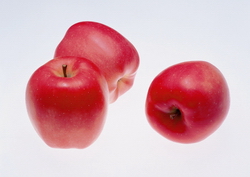
- Reduction of Pathogenic Microorganisms
Ionising radiation has been shown to reduce the number of disease-causing bacteria such as Listeria monocytogenes, Escherichia coli O157:H7, Salmonella, Clostridium botulinum, Vibrio parahaemolyticus, etc. in various food commodities (seafood, fresh produce and frozen meat products). Food can also be irradiated in its final packaging. - Decontamination
Spices, herbs and vegetable seasonings are valued for their distinctive flavours, colours and aromas. However, they are often contaminated by microorganisms because of the environment and the processing conditions under which they are produced. Irradiation is an effective means whereby dried food ingredients are decontaminated. - Extension of Shelf-life
The shelf-life of many fruits and vegetables, meats, poultry, fish and seafood can be considerably prolonged by treatment with irradiation. Depending on the dose of ionising energy applied, irradiation produces virtually no or minor organoleptic change to the food. Exposure to a low dose of radiation has been demonstrated to slow down the ripening of bananas, mangoes and papayas, control fungal rot in strawberries and inhibit sprouting in potato tubers, onion bulbs, yams and other sprouting plant foods. - Disinfestation
Irradiation has been shown to be an effective method to solve the problem of insect infestation encountered in the preservation of grains and grain products and a good alternative to methyl bromide, which is the most widely used fumigant for insect control.Is Irradiated Food Safe for Consumption?
At high energy levels, ionising radiation can make certain constituents of food become radioactive. However, the induced radioactivity was found to be significantly lower than the natural radioactivity in food. The risk to individuals from intake of irradiated food is minimal.
Based on the experimental findings of the World Health Organization, the Food and Agriculture Organization of the United Nations, and the International Atomic Energy Agency, the Codex Alimentarius Commission has prescribed the maximum absorbed dose delivered to a food in order to forestall the induced radioactivity in the irradiated food.
Nutritional changes in food attributable to irradiation are similar to those resulting from cooking, canning, pasteurising, blanching and other forms of heat processing.
Irradiation-induced changes in nutritional value depend on a number of factors: radiation dose, the type of food, the temperature and atmosphere in which irradiation is performed, packaging and storage time. In general, the quality of macronutrients (protein, lipid and carbohydrate) are not affected by irradiation and minerals have also been shown to remain stable.Control on Irradiated Food in Hong Kong
While there is currently no irradiation facility for food treatment in Hong Kong, the labelling requirement for irradiated food is stipulated in the Food and Drugs (Composition and Labelling) Regulation of the Public Health and Municipal Services Ordinance (Cap. 132) that every container containing irradiated food shall be clearly and legibly marked with the words "IRRADIATED" or "TREATED WITH IONIZING RADIATION" in English capital lettering and "輻照食品" in Chinese characters.
Regular surveillance to monitor compliance with the labelling requirements on food irradiation is conducted by the CFS. Food commodities are collected at both import and retail levels to check if those food products that have been treated with ionising radiation are properly labelled. In 2000, 69 food samples were taken for detection of ionising treatment. Six of these samples showed positive results. As these products did not bear proper irradiation labelling, warning letters were issued to their sellers requesting the products either be withdrawn from the market or properly labelled. In all cases, the products were withdrawn. No further non-compliance was detected in subsequent surveillances conducted during the period from 2001 to 2008.
Advice to the Trade
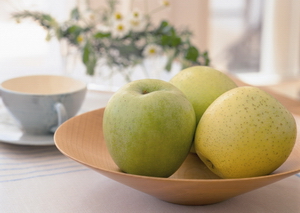
- Follow closely international guidelines on the code of practice for radiation processing of foods to ensure the absorbed dose fall within a safe range for consumers, and not destroy the nutrition value, structural integrity, and sensory attributes of foods.
- Every container containing irradiated food must be properly labelled.
- Food after irradiation must be handled under quality controlled and hygienic conditions to prevent subsequent contamination.
(II) Safety Tips for Consuming Hairy Crabs
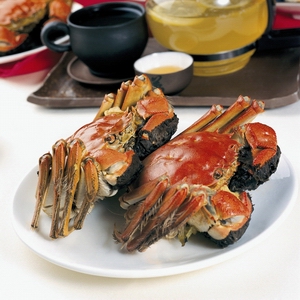
Autumn is a good season for outings and savouring seasonal delicacies like hairy crabs. Mid-autumn is the best time to sample the hairy crabs. Their tender, succulent flesh and rich, delectable roes are great delicacies for crab-lovers.
Why are Hairy Crabs Called "Dazhaxie" (Big Sluice Crabs) in Chinese?
There are differences between the hairy crabs and the regular crabs. The former is characterised by a roundist-square body and thick black hairs on the legs. Their habitat is the mudholes of rivers and lakes. That is why they are also known as "hexie" (river crabs).
How does the name "dazhaxie" come about? As hairy crabs love to chase light, a sluice ("dazha") made of bamboo and grass was used by the natives of Jiangsu to catch them. As night fell, the sluice was illuminated on one side to allure the crabs in lakes into the trap.
Advice to the Trade
To ensure food safety, the trade may refer to the following advice when supplying hairy crabs.
- Retailers must buy hairy crabs from reliable suppliers.
- Do not sell dead hairy crabs.
- Hairy crabs must be kept in refrigerators in the shop.
- Before cooking, clean the shell, legs and claws of the crabs thoroughly with a brush and water and remove all the mud from the shell, taking care to clean the hairs of claws where dirt is usually found.
- Restrict the quantity of crabs for steaming each time, and never make crabs overlap one another so that every part of the crab is thoroughly cooked.
- Do not sell hairy crab dishes that are raw or not thoroughly cooked.
(III) Cadmium in Food
What is "Cadmium" and what Contributes to "Cadmium" Exposure?
Cadmium is a metallic element that occurs naturally in the earth's crust. Cadmium has a number of industrial applications such as electroplating, manufacturing of plastic stabilisers and pigments and nickel-cadmium batteries, etc. Fertilisers produced from phosphate ores, industrial operations such as mining, mining refining are important sources of environmental contamination.
For the general public who are not smokers, food is the main source of cadmium intake. Plants and animals that grow in a contaminated environment (soil, air, water, fertilisers, feeding stuffs, etc) will take up cadmium. However, for smokers, tobacco smoke is an important source of exposure to cadmium.
What are the Health Concerns of Cadmium in Food?
Intake of cadmium from the diet rarely causes acute toxicity, and existing evidence does not indicate cancer-causing potential through oral intake. The main concern of cadmium from dietary exposure is its chronic toxicity, particularly in the kidney. Adverse effects such as abnormal excretion of protein, glucose and amino acid in urine have been observed in patients.
How is Cadmium in Food Monitored in Hong Kong?
The CFS has been monitoring cadmium in foods under the food surveillance programme. The level of cadmium allowed in food is governed by the Food Adulteration (Metallic Contamination) Regulations (Cap. 132V).
Advice to the Trade
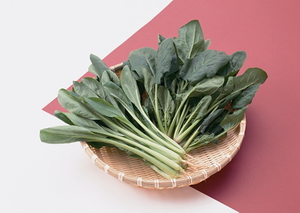
- To observe good agricultural practice to minimise cadmium contamination in food crops and animals.
- To obtain food supplies from reliable sources.
- Soak and wash vegetables, particularly leafy vegetables, thoroughly in water before cooking.
Food News
Turn and Look for Healthier Food Choices
Nutrition Labelling Series – Reference Amount of Food
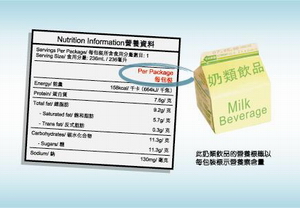 In last two issues, we provided you with answers to some of the questions concerning units for energy and nutrients. In this issue, the subject we present is the reference amount of food being used on nutrition labels.
In last two issues, we provided you with answers to some of the questions concerning units for energy and nutrients. In this issue, the subject we present is the reference amount of food being used on nutrition labels.
How much food is used as a basis for presenting the nutrient contents on nutrition labels? The amount of food used is called "The Reference Amount of Food".
Generally speaking, the reference amount of food can be expressed in the following three ways on nutrition labels:
- per 100 gram / millilitre (g/mL)
- per serving
- per package
-
Under the Nutrition Labelling Scheme to be effective in July 2010, when using "per serving" as the reference amount of food, with the "serving size" being expressed in units like pieces, cups, tablespoons, teaspoons, etc.; or when using "per package" as the reference amount of food, the metric units (such as g/mL) shall be used simultaneously to indicate the weight or volume of food.
-
If a package consists of only one serving , "per package" can be used as the reference amount of food in providing nutrition information.
Each of the above three ways for expressing the reference amount of food has its pros and cons. A better understanding of their differences will provide us with flexibility in using the information on nutrition labels.
1. Expressed in "per 100 g/mL"
Advantage - Consumers can directly compare the nutrient contents of different food products if they are expressed in "per 100 g/mL".
Disadvantage - It is difficult for consumers to estimate the quantity of food in 100 g/mL with naked eyes (e.g. how many biscuits are there in 100 g?) and therefore it is hard to know the energy and nutrient intake.
2. Expressed in "per serving"
"Serving size" of a product usually refers to the amount of food consumed customarily at an eating occasion (for instance, an adult normally takes 4 biscuits each time and a child normally drinks half a cup of juice each time).
Advantage - Using "per serving" as the reference amount of food enables consumers to estimate their energy and nutrient intake by referring to the number of servings they consumed.
Disadvantage - There is no prescribed serving sizes of different food under the Nutrition Labelling Scheme to be implemented. Serving sizes of different food products can vary (e.g. one serving of Cracker A consists of 3 pieces (total weight of 45 g) while one serving of Cracker B consists of 4 pieces (total weight of 40 g)). Therefore, consumers may not be able to directly compare the nutrition information of different food products if presented in "per serving" basis.
3. Expressed in "per package"
Advantage - Same as "per serving", using "per package" as the reference amount of food enables consumers to estimate their energy and nutrient intake by referring to the amount of food consumed (for instance, if you consume a whole package of biscuits, you will acquire the nutrients as stated on the nutrition label; if you consume half a package of biscuits, you will acquire half the amount of the nutrients listed.)
Disadvantage – As there is also no standard for the quantity of "per package". Therefore, consumers may not be able to directly compare the nutrition information of different food products.
In conclusion, when we use nutrition labels either for comparison of the nutrient contents of different food products or for calculation of energy and nutrient intake, we should pay attention to the reference amount of food (i.e. "per 100 g/mL", "per serving" or "per package") used on nutrition labels in order to know the true meaning of these figures.
Critical Control Point of Preparing Stir-fried Chicken Fillet with Celery (for Food Trade)
Celery is rich in potassium, which helps to regulate blood pressure. Together with chicken, it makes a delicious and healthy dish – Stir-fried Chicken Fillet with Celery. When preparing this dish, you may refer to our production guidelines to ensure food safety so that your customers can enjoy the food safely.
| Ingredients | ||
| Frozen chicken fillet | 200 grams | (about 5 taels) |
| Celery | 300 grams | (about 8 taels) |
| Seasoning | ||
| Ginger slices | 5 grams | |
| Shaoxing wine | 1 teaspoon | |
| Sugar | 1 teaspoon | |
| Light soy sauce | 1 teaspoon |
Steps:
- Rinse the celery, cut into sections.
- Rinse the defrosted chicken fillet and cut it into thick strips. Add light soy sauce and Shaoxing wine, marinate for 15 minutes.
- Add oil into wok. Put the celery in the wok, stir fry until cooked for later use.
- Preheat the wok and add half a tablespoon of oil. Add ginger slices, stir fry until they smell good. Then add the chicken fillet. Add the celery when the chicken fillet strips are cooked. Stir fry evenly and serve.
Production Process
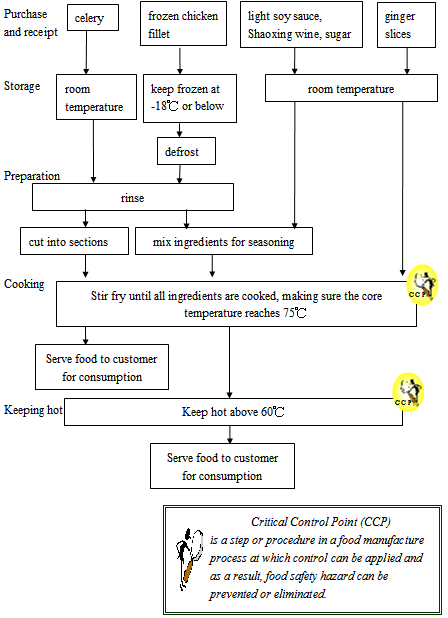
Guidelines on Production of Stir-fried Chicken Fillet with Celery
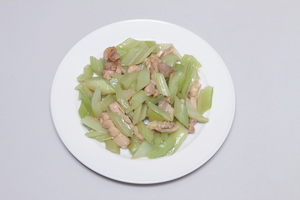
- Purchase and receipt
- Purchase the ingredients from reliable and hygienic shops.
- When buying the ingredients, make sure that:
- the ingredients are fresh and wholesome.
- the celery is neither damaged nor bruised on the surface.
- the frozen chicken fillet is stored at -18℃ or below in a freezer.
- prepackaged food items (e.g. Shaoxing wine, light soy sauce) are used before the expiry date.
- (2) Storage
- Store the ingredients immediately at safe temperature as soon as possible.
- The frozen chicken fillet should be stored at -18℃ or below in a freezer. The temperature inside the freezer should be checked and recorded regularly with a thermometer to ensure that it remains at -18℃ or below.
- The frozen chicken fillet should be stored in a container with a lid, and put under cooked food or ready-to-eat food to avoid cross-contamination. Raw food and cooked food should most preferably be stored in different refrigerators.
- Practise the first-in-first-out principle for storage. Check and record the storage date of the ingredients.
- Store the ingredients immediately at safe temperature as soon as possible.
- Defrost
- Defrost the frozen chicken fillet properly by
- storing it at 4℃ or below in a refrigerator;
- putting it under cool running water; or
- using a microwave oven.
- Defrost the frozen chicken fillet properly by
- Preparation
- Before cooking, wash all food contact surfaces (including worktops, chopping boards and utensils) thoroughly.
- Before cooking / in the course of preparing food, wash hands thoroughly with warm soapy water.
- Use two different sets of utensils (including knives, chopping boards, bowls and chopsticks) to handle raw food and cooked food separately.
- Before cooking, rinse the celery and the chicken fillet. Then, soak the celery for 1 hour or blanch it for 1 minute to reduce pesticide residues.
- The marinated chicken fillet not for cooking immediately should be stored at 4℃ or below in a refrigerator.
- Cooking
- The food should be thoroughly cooked before consumption until the meat juice of the chicken fillet becomes clear and not red.
- Use a clean food thermometer to measure the core temperature of the food, which should reach at least 75℃. (CCP)
- Keeping hot / Consumption
- The cooked food should be served to customers for consumption as soon as possible. It should not be kept at room temperature for more than 2 hours.
- Cooked food not for immediate consumption should be kept hot in pre-heated plate or steam pot above 60oC. (CCP)
- Management System
- Implement a preventive food safety management system (such as the Hazard Analysis and Critical Control Point) to identify and control any food safety problems that may emerge during production.
Briefing of Activities
(I) Experience Sharing Session on Using the Nutrition Label Calculator (NLC)
Under the Nutrition Labelling Scheme, all general prepackaged food products must bear a "1+7" nutrition label starting from 1 July 2010 . Food traders can make nutrition labels basing on the nutrition information of foods obtained by direct chemical analysis of food samples or indirect nutrient analysis of food ingredients through calculation.
The CFS has developed an online NLC which enables food manufacturers and traders to prepare nutrition labels for their products after getting relevant nutrition information (through various methods, including direct chemical analysis and indirect nutrient analysis). The CFS held an experience sharing session on using the NLC to make nutrition labels for the trade, especially small-medium entrepreneurs, at the Lecture Theatre of the Hong Kong Central Library in the morning of 12 June 2009 .
The session was divided into two parts. The first part was mainly devoted to a presentation of the NLC by representatives of the CFS and a demonstration of its use. It was followed by a presentation of the Food Composition Database of The Chinese University of Hong Kong (CUHK) by representatives of the CUHK's Food Research Centre and a demonstration of its application at the CFS's invitation. The second part was a hands-on session allowing participants to use the NLC, to exchange views and share their experience in making nutrition labels.
Over 70 members of the trade attended the experience sharing session. Most of them indicated that the presentations of the speakers, the practice sessions and experience sharing were useful to them in preparing nutrition labels.
The presentation materials of the sharing session have been uploaded onto the webpage of the CFS. Interested parties may visit the following website:
http://www.cfs.gov.hk/english/programme/programme_nifl/programme_nifl_Workshops_on_NLS_ESS.html
For details of the NLC, please visit the following website:
http://www.cfs.gov.hk/english/programme/programme_nifl/nlc-intro.html
(II) Food Safety Charter 2009
In 2008, the CFS launched the "Food Safety Charter 2008" with the aim of joining hands with the trade to promote the "5 Keys to Food Safety". The "5 Keys to Food Safety", namely, Choose, Clean, Separate, Cook and Safe Temperature, are the five simple and effective keys advocated by the World Health Organization to prevent foodborne diseases. The campaign was warmly welcomed by the trade, with a total of 20 food trade associations and over 1 600 licensed food premises / supermarkets / convenience stores participating.
Following the success of the "Food Safety Charter 2008", the CFS invited food trade associations and licensed food premises to sign up to the "Food Safety Charter 2009" in July to join hands to ensure food safety by promoting and practising the "5 Keys to Food Safety". A total of 21 food trade associations and over 1500 licensed food premises / supermarkets / convenience stores signed up to the Charter, reflecting encouraging response from the food trade in promoting the "5 Keys to Food Safety".
Upon signing up to the Charter, the signatory is committed to promote and practise the 5 Keys to Food Safety, to set a good example for the food trade and to build a good image of the signatories, so as to help build a food safe city.
In order to recognise the continuous support of the food trade in ensuring food safety, a new recognition scheme is introduced for the Food Safety Charter 2009 this year. Food trade associations which have signed the Charter for yet another time and also successfully encouraged their members to sign the Charter will be granted a Star Award in the Charter. Licensed food premises which have signed the Charter for yet another time, kept up their effort in promoting and practising the 5 Keys to Food Safety and observing licensing requirements to ensure food safety will be granted an Award in the Charter.
Details of the "Food Safety Charter 2009" and the recognition scheme are available on the following website of the CFS:
http://www.cfs.gov.hk/english/whatsnew/whatsnew_fstr/whatsnew_fstr_food_safety_charter.html
(III) Food Hygiene Seminar 2009

The CFS of the Food and Environmental Hygiene Department holds the Food Hygiene Seminar 2009 during the period from July to December with "5 Keys to Food Safety" as the theme. This series of seminars aims to promote proper food handling to employees of food business, staff of care centres, teachers and the wider community. Through tripartite collaboration among the Government, the public and the food trade, together with their active participation, and the promotion of "Hazard Analysis and Critical Control Point (HACCP)" System and "Food Safety Plan" to the trade, food safety can be enhanced. Also, an introduction to the Nutrition Labelling Scheme will be included in the seminar.
The food hygiene seminars, 22 numbers in total, have been holding at different venues across the territory. The CFS has sent letters to the food trade, inviting them to attend. The dates and venues of the seminars to be held in October and November are as follows:
| Date | Venue |
|---|---|
| 9 October 2009 | Tsuen Wan Town Hall |
| 30 November 2009 | Ngau Chi Wan Civic Centre |
Those who are interested may call the Communication Resource Unit of the CFS at 2381 6096 for enquiry and enrolment.
The seminars, free of charge, are conducted in Cantonese. All participants will be awarded a certificate of attendance and a souvenir.
(IV) Food Safety Seminar cum Food Safety Charter 2009 Presentation Ceremony
The CFS held its biennial Food Safety Seminar on 17 September 2009 at the Hong Kong Central Library. The Seminar served as a forum for interactive exchange of information and views between the Government and food trade.
Subjects covered by the Seminar include the Pre-Statutory Voluntary Registration Scheme for Food Importers / Distributors, the latest legislative amendment relating to food recall, the Nutrition Labelling Scheme (including the Small Volume Exemption Scheme), the Amendment Regulations on preservatives and colouring matter in food, the proposed regulatory framework for pesticide residues in food, the Supplementary Information to Microbiological Guidelines for Ready-to-eat Food and the guidelines on reducing aluminium and trans fats in food. This year, the CFS took the opportunity to introduce the results of the Survey on "5 Keys to Food Safety" in the Seminar. In the same occasion, the "Food Safety Charter 2009 Presentation Ceremony" was conducted.
(V) Application Procedures under the Small Volume Exemption Scheme
The Food and Drugs (Composition and Labelling) (Amendment: Requirements for Nutrition Labelling and Nutrition Claim) Regulation 2008 will come into effect on 1 July 2010. Under Part 2 of Schedule 6 to the Regulation, the importer or the manufacturer of a prepackaged food product may apply to the CFS for exemption from the nutrition labelling requirements, if the Director of Food and Environmental Hygiene is satisfied that the annual sales volume of the food product of the same version in Hong Kong would not exceed 30 000 units and that no nutrition claim is made on the label of, or in any advertisement for the product.
The CFS began accepting applications under the Small Volume Exemption Scheme on 1 September 2009. Traders could download the application form from the CFS's website or obtain it from the CFS's main offices. Completed application forms could be returned by email, post, fax or in person.
A trader can apply in the name of a company or an individual. For application made in the name of a company, the trader should submit a copy of a valid Business Registration Certificate along with the application form. For application made in the name of an individual, the trader should submit a copy of his identity card and a copy of a Business Registration Certificate. The trader must provide his personal / company's particulars, product information and distribution list in the application form, and submit photos or scanned images and the bar code (if available) of the product. If it is not possible to provide photos, images or the bar code, the trader may choose to submit an empty pack or a package of the product.
For applications submitted before the end of October 2009, the CFS will inform the applicants of the results of application before 18 December 2009. The effective date of exemption will generally fall on 1 July 2010. The trader may choose the first day in any calendar month between August and December 2010 as the effective date of exemption. In any case, the trader should pay the exemption fee of HK$345 in July 2010 or within a specified period afterwards. Otherwise, the exemption will be revoked.
For details about the Small Volume Exemption Scheme, please visit the website of the CFS (http://www.cfs.gov.hk).
Q & A
1 . Is there any control on false labelling of food?
According to Section 61 of the Public Health and Municipal Services Ordinance (Cap. 132), if any person gives with any food sold by him, or displays with any food exposed for sale by him, a label, whether or not the same is attached to or printed on the wrapper or container, which:
(i) falsely describes the food; or
(ii) is calculated to mislead as to its nature, substance or quality,
he shall be guilty of an offence. Upon conviction by the Court, the offender is liable to a maximum fine of $50,000 and imprisonment for 6 months.
2. Where could the trade find the list of registered vegetable farms / collecting and processing establishments in the Mainland?
The CFS has made an arrangement with the State General Administration of Quality Supervision, Inspection and Quarantine (AQSIQ) to upload the list of vegetable farms / collecting and processing establishments for exportation to Hong Kong onto their webpage. The list will be updated by the AQSIQ from time to time. A link to the relevant webpage is created in the CFS's website at
http://www.cfs.gov.hk/english/links/links_rs/links_rs.html
3. What are the benefits of implementing a Food Safety Plan (FSP)?
Traditional food management systems are reactive to food hazards. However, a FSP adopts a proactive approach to forestall food hazards, thus minimising the occurrence of food poisoning and improving consumers' confidence in food safety. In the long run, a FSP lowers production cost by, for example, reducing raw material wastage and the chances for food recall.
Legislation
Sweeteners in Food Regulations
Under the laws of Hong Kong, sweetener means any chemical compound which is sweet to the taste, other than sugars or other carbohydrates or polyhydric alcohols. There are two categories of sweeteners, namely naturally occurring sweetening agents and synthetic compounds. They are either extracted naturally from plants or chemically synthesized. Some sweeteners are tens of times more sweet than cane sugar and only a small quantity of them will be sufficed to sweeten food, but the calories they entail are much lower than that of cane sugar. Like all the other food additives, sweeteners have to undergo stringent safety assessments before they are permitted for use in food.
According to the Sweeteners in Food Regulations made under the Public Health and Municipal Services Ordinance (Cap. 132), only the following eight groups of sweeteners are permitted for use in Hong Kong:
- Acesulfame Potassium
- Alitame
- Aspartame
- Aspartame-acesulfame Salt
- Cyclamic Acid (and Sodium, Potassium, Calcium Salts)
- Saccharin (and Sodium, Potassium, Calcium Salts)
- Sucralose
- Thaumatin
Advice to the Trade
- Food manufacturers should only use sweeteners stipulated by law and should not use non-permitted sweeteners like Stevioside.
- Artificial sweetener should be properly labelled either by its specific name or its International Numbering System for Food Additives number on the package according to the Food and Drugs (Composition and Labelling) Regulations.